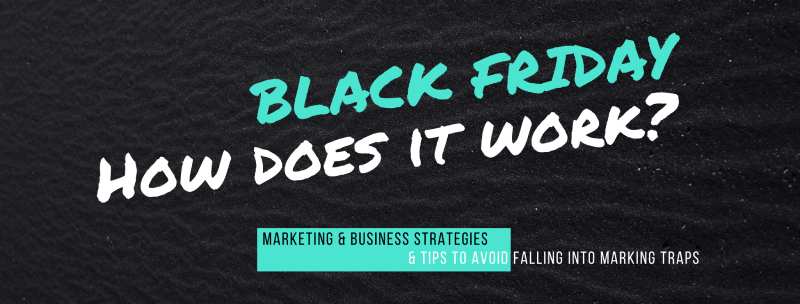
For understanding how does Black Friday work it’s important to look at it from another point of view, the retailer’s perspective: business models and marketing strategies.
More over, what are the tips to identify a good deal while avoiding falling into marketing traps.
- The most important message: you are better off paying full retail price for what you actually want when you actually want, but especially need it.
- Companies make most of the profit with high sales volume, complimentary items, or inventory clearance.
- Marketing campaigns will most likely push strategies focused on the scarcity and limited time, anticipation, or pre-sales to target customers to boost sales.
- While purchasing, be rational. Do not focus on the discount. Compare prices. Avoid scams.
- Black Friday is generally bad for the environment because people just buy what they do not need

Companies improve their profitability, actively or passively, during these days driven by aggressive marketing campaigns.
It is possible to find good deals during Black Friday, but rarely!
Environmental friendly marketing guru
You need to be rational and do not fall into the trap of marketing strategies.
With the insight of how Black Friday works, you can understand the reason why the words “quality” and “Black Friday” can’t be used in the same sentence.
Waiting for amazing Black Friday deals? For making a correct and conscious purchase we recommend some tips not to fall into the Black Friday trap.

Buy what you need, do not make compromises
A deal is rare during Black Friday and it means that the probability to find quality products during Black Friday is low, but not impossible.
Even saving 10$ is a deal, but only if you are sure what you need in the short or in the long term.
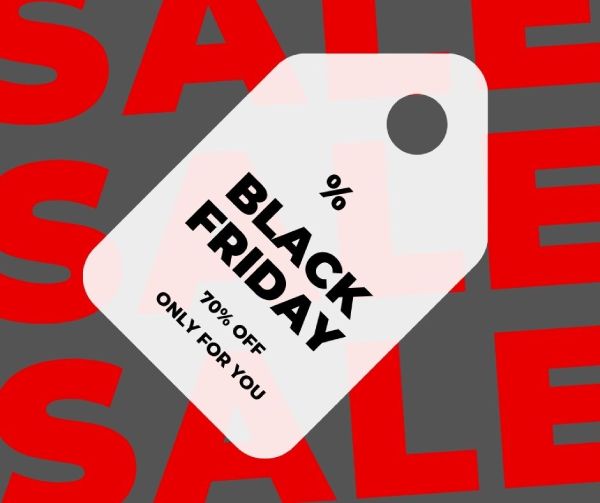
Don’t’ make these mistakes:
- Buy it and leave it in the storage
- Buy it and regret it because the quality doesn’t match your expectation
If you chase sales you pretty much ALWAYS end up compromising, sometimes only a little bit, but generally quite a lot.
Sure – sometimes you can luckily find something on sale, which is exactly what you want – but it is really unlikely.
Sale products are generally:
- Old stock
- Unpopular items
- Odd sizes
- Poor quality
So you end up either:
- Buying something you didn’t need – because it is “cheap”
- Compromising on color, size, etc

Why Black Friday is bad?
Black Friday is the most consumeristic day of the year and during this day people tend to shop irrationally.
The production of what you buy:
- Generates environmental pollution.
- Creates delocalization of the manufacturing process in Asian countries.
Buying is not a problem. Buying for the sake of buying – is.
Don’t let marketing win on you!
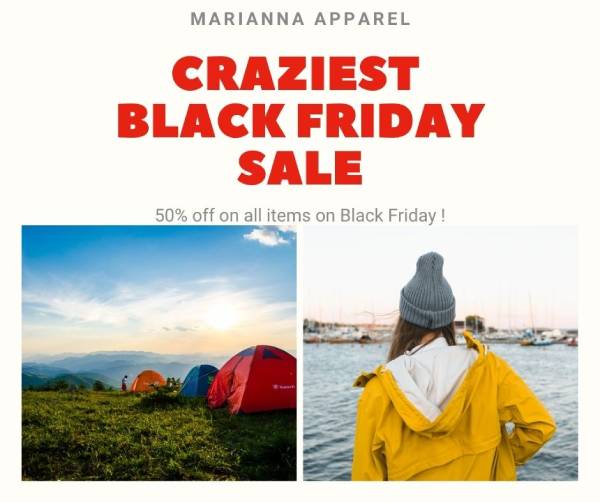
Do Black Friday products have lower quality?
The best brands aren’t on sale!
Considering high prices equals high quality (which is not always true!), most likely you won’t find quality products with incredible discounts.
With a few tens of dollars of discount, “High Volume” is the most common “Black Friday strategy” that retailers adopt.
You can read more about the business models utilized during Black Friday in the next paragraph.
Some brands may also have some agreements with the retailers setting a minimum price limit and the retailer can’t sell below it.
This is the reason why Apple does not take part in Black Friday, for example.
Stores tend to steeply discount products which haven’t got sold well or are about to become obsolete, sometimes selling it ‘at cost’.
Can we define these products as “low quality” ones? Yes, we can.
Moreover, some sellers may take dirty advantage of the busiest shopping day of the year. But this is just a small minority among the retailers.
In the tips sections we recommend some tools to use to avoid scams.

What are the business strategies for Black Friday?
Companies can adopt different strategies to boost their profit with Black Friday.
Retailers can use an active approach, selling more, or a passive approach, getting read off of unsold items:
- High volumes
- Profit on complementary or supplementary items
- Sales Velocity
- Save loss and inventory
- Scammers
High volumes
The companies that adopt this strategy have a solid, proven, and aggressive marketing campaign which drives the sales on the most profitable day of the year.
By lowering the price, the number of orders grows.
With high volumes of sales, despite the profit margins being lower, the generated returns are still quite high.
We must not forget, that cheaper products tend to have higher margins, and lowering the price still enables companies to profit. More expensive items have lower margins and the discount on them needs to be very moderate.
Let’s have an example, I should also point out that most products on retail have a profit margin of 40% so selling the product at 20% discount for black Friday still ensures the seller is profitable at 20%.
Again, it’s better to sell 100 units at a profit on 2$ each — making 200$ in one day, than selling 10 units at a profit of 6$ each — making 60$ in one month.
Profit on complementary or supplementary items
It’s assumed that most of the items are sold on Black Friday with very low margins. While it’s true for some items, for a lot of other items it is not.
For example, you may buy a pair of shoes at a discounted rate. Then, you buy a bundle of socks which is not discounted.
Though socks aren’t discounted, you will think you’re going to need them anyway. So, why not wear a new shoe with new socks?
Thus, the retail stores balance the discounts with the margin of supplementary or complementary items.

Sales Velocity
When it is the website that decides what you need, this strategy is called Sales Velocity. This is driven by algorithms to decide the virality of a product, combined with relevance.
This is how Black Friday works at Walmart or other websites like Amazon or Alibaba. The online platform uses the data to order the position of the items allowing them to get more sales on a regular day.
Sales Velocity is used on Black Friday, but also all year round as it is an extremely effective method of visits-purchases conversion.
With this information, just don’t stop at the home page.
Save loss and inventory
A lot of times sellers have to move inventory to clear up things before their expiration dates, or seasonal items. When the expiration date is approaching the stores try to sell the item off by put them on heavy discount. This allows to secure the cost of the product and avoid a loss.
By clearing these kinds of items retailers can use the cash flow for next season items or simply for a new fresh batch of the same.
Also by selling out inventory it is possible to get away from paying huge long-term warehousing fees in countries where you don’t own your own.
Inventory storage and movements have lots of impacts on the balance sheets of the stores. So, most of the stores need to flush out their inventory every year and get new fresh products to keep customers coming back and make their accounting books look good.
Black Friday is a big opportunity for them and they try to clear their inventory with heavy discounts.
That being said, sellers are more winners than the customers who open up their wallet on Black Friday.
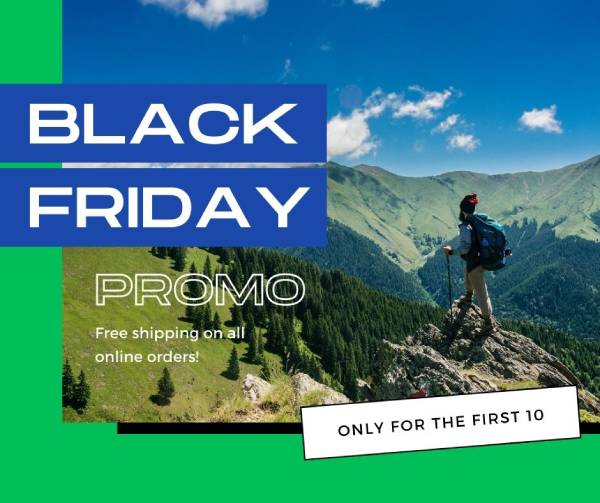
Scammers
There is another category of retailers, and they are the ones who cheat or run scams.
Fortunately, they are a minority, but you can encounter them:
- Raise the price
- Keep “normal price” higher
- Fake websites
Raise the price
Some cheater might raise their prices just before Black Friday. And what happens next? The prices drop on Black Friday which gives an impression of a great deal.
This is the reason why, in the section dedicated to the tips, we recommend considering only the price that you pay and not the initial one.

Keep “normal price” higher
Instead of discounting products in order to clear languishing inventory at the last minute, retailers work on maintaining during Black Friday an average sale price for an item, which will be much lower than its full price.
As an example, the company purchased a jacket from a supplier for $14.50 and sold it for about $50 in the store.
The price tag of $50, a 70 percent markup, is then “normal” price when in reality has too high margins.
Then, there are “sale” prices, where you, the smart sale shopper, buy the product for a bit less than that normal price at $44.99.
Fake websites
Scams from fake online shops are possible to encounter and you can easily spot them because the prices are way too low. They are mainly advertised on social networks.
Setting up this kind of scam is pretty easy and fast and they are quite fast to disappear. Unlikely, your email asking where is your 70% discounted gift won’t ever be replied to. What a bargain! Isn’t it?!
In the tips section, we reference an online tool that you can use to verify the trustability of the web-store.
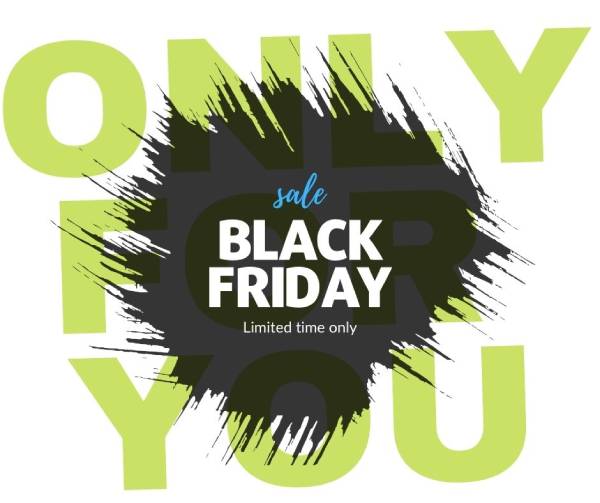
How marketing drives Black Friday?
If Black Friday has a huge success it is because marketing leads successful campaigns of persuasion.
For boosting sales there are different techniques and strategies that use powerful psychological triggers, as for example like urgency and scarcity:
- Anticipation prior to the event
- Pre-sales
- Urgency by scarcity and limited time
- Bundle complementary products
- Reward previous customers
While walking on the streets or browsing websites and social networks, surely, you have encountered one of these persuasive messages.
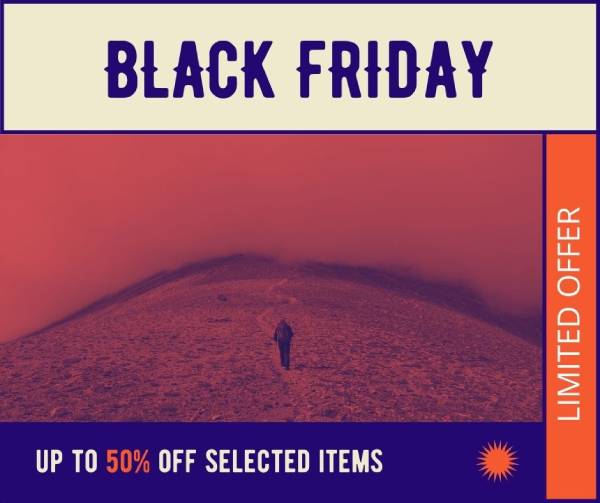
Anticipation prior to the event
Marketing companies create a teaser of a specific product, or an offer, to track the pre-sale campaign, one or two weeks before Black Friday week.
Using smart and engaging content, but without selling, it creates the desire for purchasing.
With a successful practice of building anticipation, customers, when the big day arrives, are ready to buy.
Pre-sales
Anticipating some good deals before the big day is an option that only exclusive people can obtain.
People like to feel special, and having this option of pre-ordering is just a privilege that they don’t want to lose.
Such a lucky person you are and now you want to buy it!
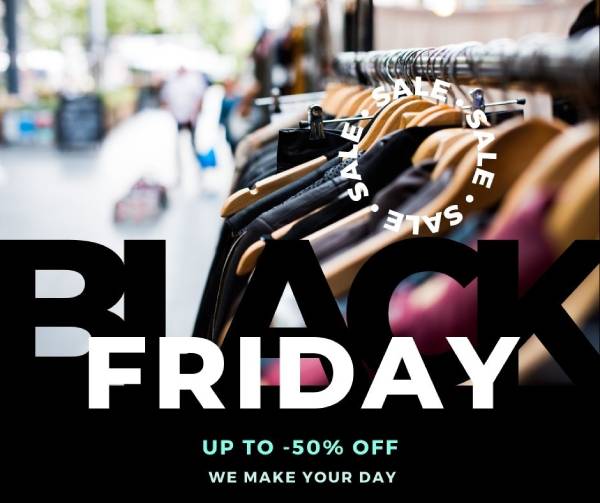
Urgency by scarcity and limited time
Nothing persuades buying behavior more than a bit of genuine scarcity.
Only 10 items left in the stocks! Only during Black Friday! Today only!
Scarce resources help to create urgency, inspire action, establish an “exclusive” feeling for customers, and perhaps best of all, redirecting your attention away from discounts into the rush of not missing the great opportunity.
Have you ever spotted a countdown timer?
This tactic by using countdown timers in email campaigns and on landing pages enhance the intensity and effectiveness of view per purchase conversion.
Bundle complementary products
Bundling products is a common and brilliant solution to boost the sales.
When purchasing a product it “looks cheaper to buy it in a bundle”.
From the customer perspective, most likely you will end up buying that product later anyway.
Why not so save some money now?
Reward previous customers
A happy customer is willing to make other purchases.
This is the reason why you may receive email or see advertisements on social networks as a hint of upcoming discounts, soon or even right at this moment.
Such a sweet reminder, thank you! I may need this and maybe in the future, I will need that!
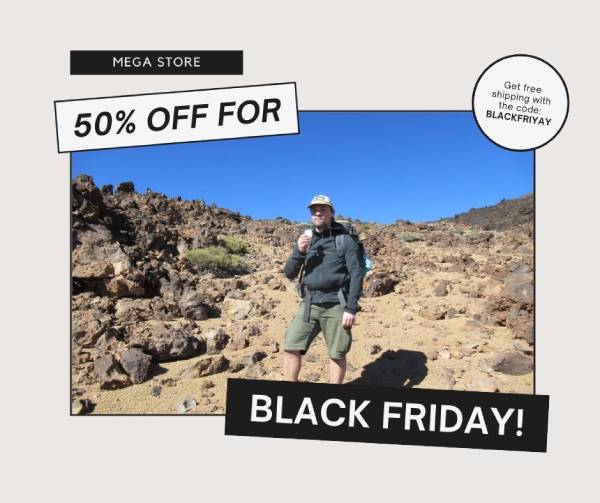
Black Friday shopping tips
Is it possible to find good deals during Black Friday?
It is possible to find good deals during Black Friday, but rarely!
It’s rare, but not impossible. So if you still want to hunt for those on Black Friday, it is important to stay rational not to fall into the traps of the marketing strategies.
You can use these recommendations to make a correct and conscious purchase during Black Friday, or at any other time of the year:
- Don’t buy just because it’s Black Friday or just because it is on sale.
- Set a budget.
Overspending is easy, especially when shopping online. - Know what you are going to buy and stick to it.
- Make a research about the product before Black Friday week.
Features, technical specifications, and so on. By collecting this information you avoid buying a poor quality item at the same price as a good one. It’s a real waste of money and it is not environmentally friendly because you generate trash… and yeah, in the future you will buy a good quality item. - Look at the price, not the ‘saving’.
Focusing on what you are going to pay helps to understand the value of the product. Don’t let marketing techniques mislead you. - Price comparison and price history. Prices are undoubtedly a crucial aspect, so let’s find the best possible deal.
- Use comparison tools like shopping.google.com or similar websites.
- Research your favorite products’ price history. There are useful web tools you can use to check how much a product has actually been sold for previously, so you can work out, whether the ‘sale’ price really represents good value.
- When you’re in a store, smartphone apps such as BuyVia, Shopkick, ShopSavvy, and Shopular let you scan barcodes or QR codes to compare prices, get discounts, and score coupons.
- Evaluate the price by comparing similar products . We have developed the comparison tool for jackets and the comparison tool for tents for solving this issue.
- Avoid suspicious websites, buy only from popular and trustable e-commerce websites.
If everything is on a 30-70% discount… it’s better if you check if the website is safe. Urlvoid.com is one option: free, fast, and trustable.
A website less than one-year-old is unlikely to provide such amazing deals. With all items with a huge discount.. they will either end up in bankruptcy or it is a scam.
